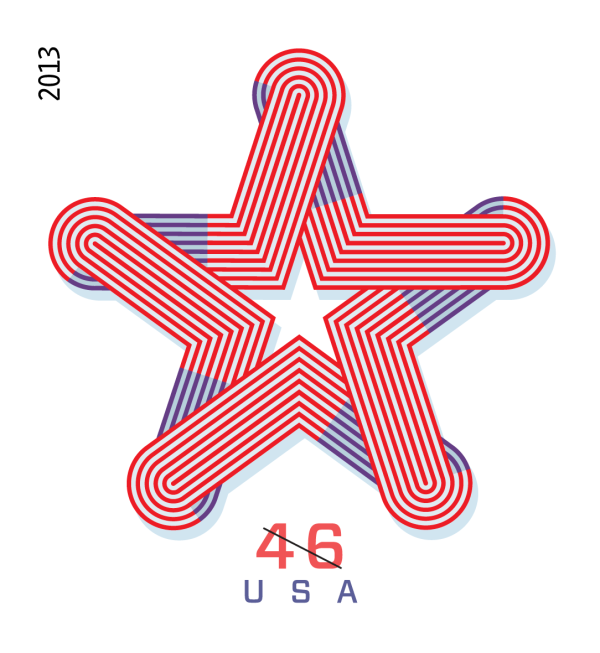About This Stamp
With this illustration of a red, white, and blue striped star, the U.S. Postal Service celebrates American patriotism. The star is one of the nation's quintessential symbols, a shining reminder of our indomitable spirit. “When I go out of doors in the summer night, and see how high the stars are,” wrote 19th-century philosopher Ralph Waldo Emerson, “I am persuaded that there is time enough, here or somewhere, for all that I must do.”
The Patriotic Star stamp features a red, white, and blue five-pointed star on a white background. The star on the stamp is actually two stars — a smaller one inside a larger one. Both have five points, like the stars on the American flag.
Created digitally by artist Nancy Stahl, the star is designed to look like it is crafted from striped ribbon. Greg Breeding served as the art director on the project.
To accommodate business use, the Patriotic Star is being issued as a First-Class Rate Large Coil stamp in coils of 10,000.
Stamp Art Director, Stamp Designer

Greg Breeding
Greg Breeding is a graphic designer and principal of Journey Group, a design company he co-founded in 1992, located in Charlottesville, Virginia. He was creative director until 2013, at which time he began serving as president and continued in that role through 2023.
Breeding’s fascination with modernism began while studying design at Virginia Commonwealth University. His affinity with the movement continues and motivates his ongoing advanced studies at the Basel School of Design in Switzerland most every summer.
As an art director for postage stamp design since 2012, Breeding has designed more than 100 stamps covering a diverse array of subjects, from Star Wars droids and Batman to Harlem Renaissance writers and the transcontinental railroad.
His work has been recognized in annual design competitions held by Graphis, AIGA, PRINT magazine, and Communication Arts.
Breeding lives in North Garden, Virginia, with his wife and enjoys nothing so much as frolicking on the floor with his grandchildren.
Stamp Artist

Nancy Stahl
A native of Long Island, New York, Nancy Stahl studied art at the University of Arizona, the Art Center College of Design in Los Angeles, and the School of Visual Arts in New York City. Her career can be split nearly equally between traditional media and digitally created art. Originally working in graphite, she experimented with a variety of media before making gouache paintings her signature style. She learned to work digitally starting in 1989 and abandoned her paints a few years later.
Stahl’s clients have ranged from newspapers and magazines such as The New York Times, The Wall Street Journal, TIME magazine, and Der Spiegel to corporate identity, packaging and billboards for companies such as The Disney Family Museum, Sharffen Berger chocolates, and Stonyfield Farms. Her love of craft has allowed Stahl to accept assignments as varied as creating lace for the Metropolitan Museum of Art’s Costume Institute and knitting Christmas stamp designs in 2005 for the US Postal Service.
Her work is represented in The Illustrator in America, 1860–2000 by Walt Reed and Rolling Stone: The Illustrated Portraits edited by Fred Woodward. An instructor in the Independent Study Masters Degree program at Syracuse University, Stahl has also taught illustration at the School of Visual Arts and the Fashion Institute of Technology. In 2012, She was elected to the Society of Illustrators Hall of Fame.
Stahl works from her studio in New York City where in her leisure time she pursues her hobby of computerized knitting.
She has designed more than 40 stamps for the U.S. Postal Service including the New York Public Library Lion (2000), three stamps for the Stars and Stripes issuance (2015), 19th Amendment: Women Vote (2020), and Women's Rowing (2022). Stahl is especially well known for her highly stylized animal stamps, including Bighorn Sheep (2007); the Save Vanishing Species semipostal (2011, reissue 2014), featuring a portrait of an Amur tiger cub; Penguins (2015); Frogs (2019); and Save Manatees (2024). Most recently, Stahl illustrated the 2026 Sunflowers stamp.
